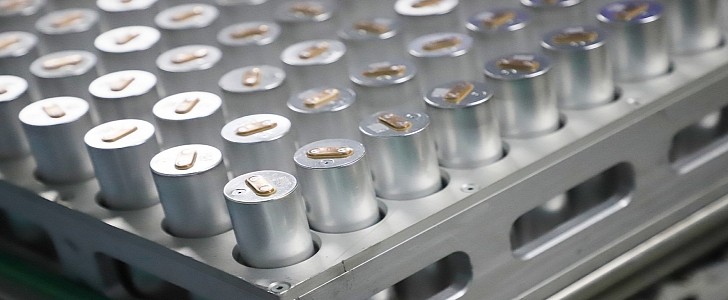Li-Ion batteries power almost everything these days, thanks to their unique qualities. Although ubiquitous, they are not perfect, and research is underway to find better energy storage solutions. Aluminum-Sulfur batteries show promising characteristics, but progress has been limited.
Researchers have been looking for decades to find the best battery cell formula. Right now, the best solutions come from the various types of Li-ion batteries. They are relatively cheap to manufacture and offer reasonable durability and energy density. But they are always a sum of trade-offs between different characteristics. That’s why researchers try to find better alternatives, even though Li-ion batteries seem forever entrenched in our lives.
The industry is predicted to move to chemistries that replace expensive materials like lithium, nickel, and cobalt with more readily available ones, like aluminum or iron. A paper published in Nature magazine describes a new battery type that uses aluminum and sulfur as the main components. The chemistry promises to offer a cheap solution and a significant improvement in energy density and fast-charging capacity.
It sounds like the holy grail of batteries, but aluminum-sulfur batteries are not new. The reason why they are not more present in our lives is the dendrites that form between their electrodes. These can lead to shorting, effectively killing the battery in a very short time. The research indicates that a new type of electrolyte can prevent dendrite formation, but there’s a catch. To work efficiently, it needs to be kept just above the water boiling point, at 110 degrees Celsius (230 degrees Fahrenheit).
The paper published in Nature shows that the ideal electrolyte is a molten-salt compound composed of sodium, potassium, and aluminum salts. The critical ingredient is chloroaluminate (AlCl3), which makes the molten salt electrolyte far better than the room-temperature ionic liquids used until now. The result is short of amazing, with rapid charging rates at up to 200C and the battery enduring hundreds of cycles at very high charging rates without aluminum dendrite formation.
Most importantly, the cell level cost is projected to be one-sixth that of current Li-ion batteries. This could be ground-breaking at $15 per kWh or around $1,200 for a 75 kWh battery pack. It’s not all rosy, though, as any water contamination of the materials can lead to hydrogen sulfide production. This is a gas that is both poisonous and highly flammable. As long as the battery components don’t come in contact with water (or water vapors in the air), the new type of battery should be much safer than existing Li-Ion batteries, though.
The industry is predicted to move to chemistries that replace expensive materials like lithium, nickel, and cobalt with more readily available ones, like aluminum or iron. A paper published in Nature magazine describes a new battery type that uses aluminum and sulfur as the main components. The chemistry promises to offer a cheap solution and a significant improvement in energy density and fast-charging capacity.
It sounds like the holy grail of batteries, but aluminum-sulfur batteries are not new. The reason why they are not more present in our lives is the dendrites that form between their electrodes. These can lead to shorting, effectively killing the battery in a very short time. The research indicates that a new type of electrolyte can prevent dendrite formation, but there’s a catch. To work efficiently, it needs to be kept just above the water boiling point, at 110 degrees Celsius (230 degrees Fahrenheit).
The paper published in Nature shows that the ideal electrolyte is a molten-salt compound composed of sodium, potassium, and aluminum salts. The critical ingredient is chloroaluminate (AlCl3), which makes the molten salt electrolyte far better than the room-temperature ionic liquids used until now. The result is short of amazing, with rapid charging rates at up to 200C and the battery enduring hundreds of cycles at very high charging rates without aluminum dendrite formation.
Most importantly, the cell level cost is projected to be one-sixth that of current Li-ion batteries. This could be ground-breaking at $15 per kWh or around $1,200 for a 75 kWh battery pack. It’s not all rosy, though, as any water contamination of the materials can lead to hydrogen sulfide production. This is a gas that is both poisonous and highly flammable. As long as the battery components don’t come in contact with water (or water vapors in the air), the new type of battery should be much safer than existing Li-Ion batteries, though.






